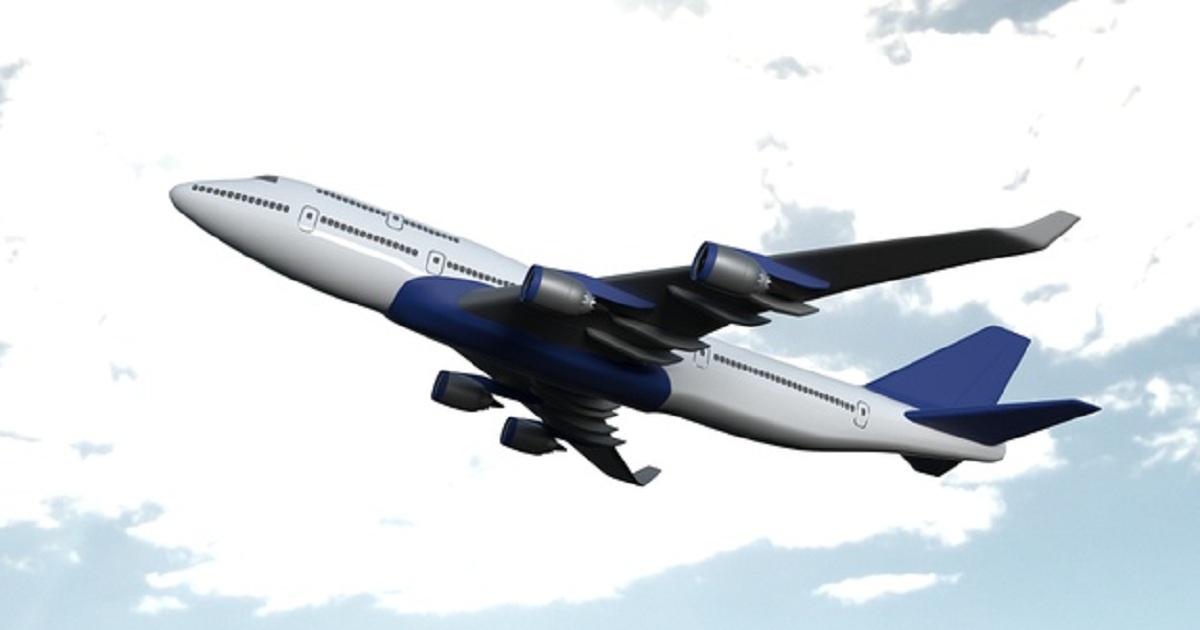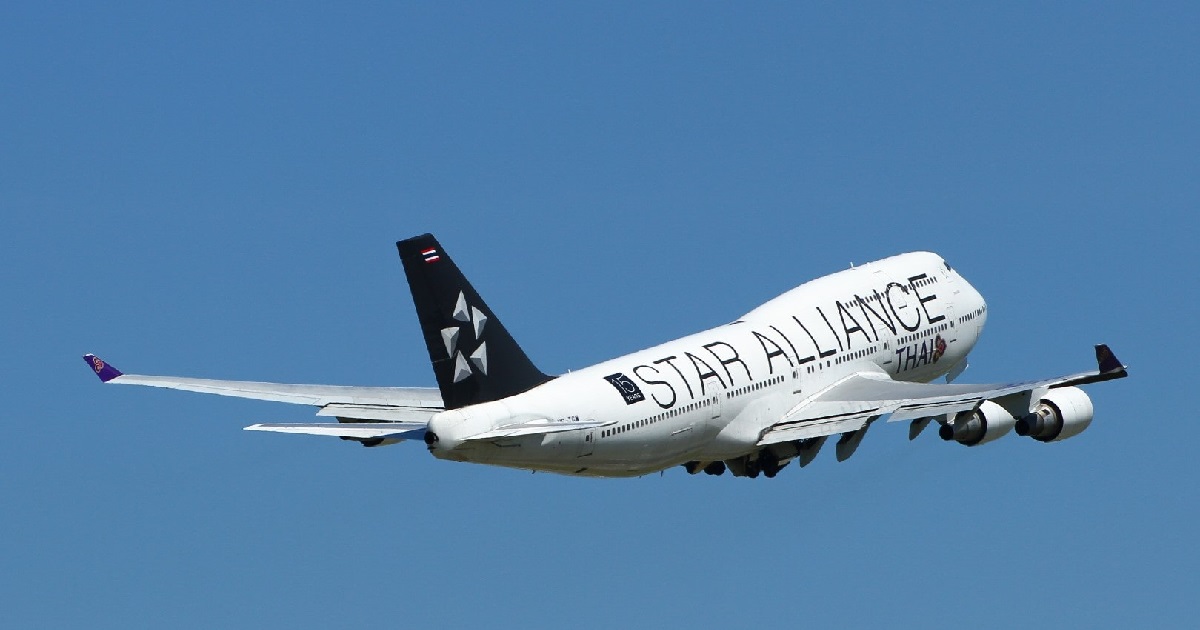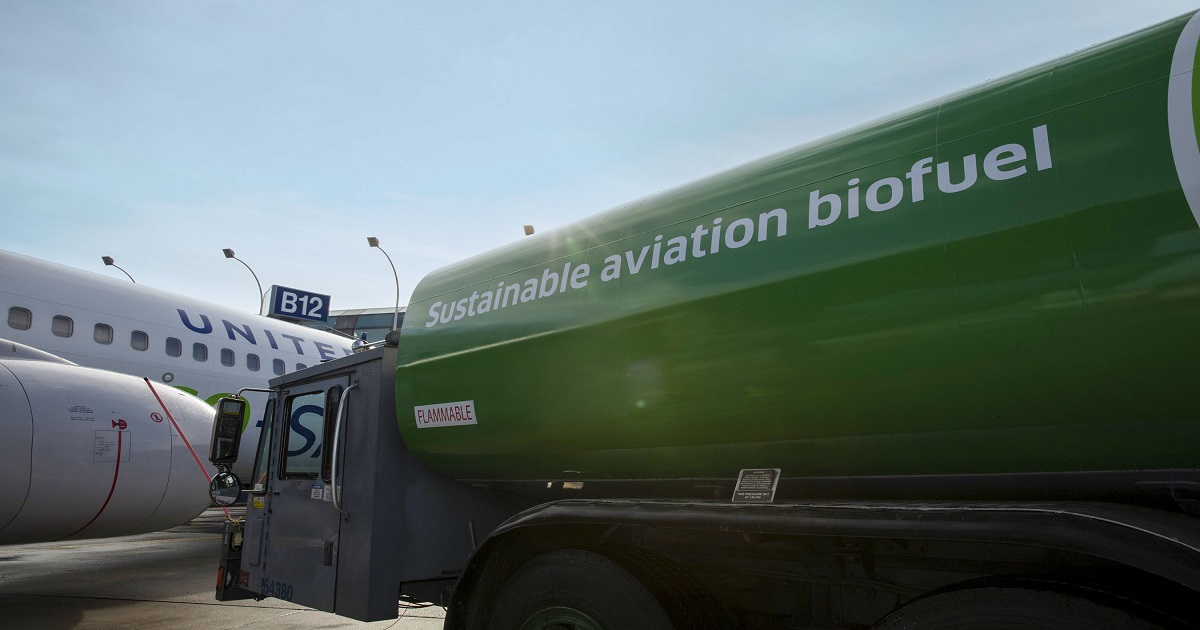
Air Transport
Article | July 6, 2022
There’s been a lot of talk lately about airlines around the world beginning to favor smaller aircraft. Not just amid the pandemic but for the foreseeable future as well. The debate was given fuel when Lufthansa’s CEO made comments about potential down-gauging of its fleet ahead. But have we really entered the era of smaller airplanes for good?
Many have argued that even when demand for air travel does return there will be less of it overall because of a precipitous and permanent drop in business travel. And beyond that, even where demand does exist, it will be for convenient, point-to-point service, not on A380s via big hubs – as smaller planes emerge that are capable of flying farther and people shy away from big, crowded airports and the hassle of connecting. All of which calls for smaller planes. I’ve argued recently that this seems a little hasty. Nevertheless, the jury is out, and as they say – only time will tell.
Have smaller planes taken over flying?
One thing we can look at is whether the notion that smaller planes rule the day holds true at major airlines right now. And pulling some Flightradar24 data we can see that this has been happening – mostly. The headline takeaway seems to be that bigger planes do still have their place, but for obvious reasons smaller wide-bodies have proven more desirable on many global routes during the past year.
Lufthansa dropped its Very Large Aircraft quickly
If we look at Lufthansa’s data, the trend is very clear right from the beginning of the pandemic. The A380 and the 747s (both -400 and -8I) took a definitive hit beginning in March 2020. That was it for the A380 and the 747-400 for good, it seems. The small rebound in A380 flights recorded in recent months were storage-related. And since the pandemic started, it’s clear that the smaller A330 has been clearly favored, taking up nearly double the percentage of flying it had at Lufthansa pre-pandemic.
What’s most interesting here is that the 747-8I did come back, in some weeks to pre-pandemic levels. That’s quite a big plane. It is probably hard to fill these days. But it is Lufthansa’s flagship now – it has a First Class cabin and it can carry quite a bit of cargo. As a result it kept flying for a while on the bigger US routes like LAX. However recent dips in demand, and the winter season, saw the smaller and more fuel-efficient A350 come in to replace it on many routes. As I write this the Lufthansa 747-8I is in flight on just two routes – Mexico City (MEX) and Buenos Aires (EZE) to Frankfurt (FRA).
If I were to take a guess, I’d say we continue to see the 747-8I for some time on these bigger routes and in busier seasons. It may turn out to be one of the last options for passengers to fly a 747 a few years from now. Eventually, though, the more efficient 777X will replace it. Though Lufthansa has said it’s looking to shift to smaller airplanes overall, the 777X seems a natural fit for its big hub to hub routes. I don’t think we’ll see a day when the A350 is the largest plane in Lufthansa’s fleet – at least as long as Germany remains Europe’s largest economy.
Delta favors smaller, but only by a little bit
If we look at Delta, which also has a wide range of wide-bodies in its fleet, the picture is a little more complicated. In part that’s because initially its 777s and A350s (both of which fit about 300 seats) took over quite a lot of flying while its smaller 767s (200 to 240 seats or so) were more or less parked.
Since then, however, the 777 fleet has been retired and the 767s (both -300 and -400 series) have been doing nearly 60% of Delta’s wide-body flying. And its smallest Airbus wide-body, the A330-200, has flown much less throughout the pandemic. The A330-300, A330-900neo and A350-900 have filled in the rest of the flying, but while they were doing a majority of the wide-body flying in the first months, they’re not back to flying roughly the same percentage of Delta’s wide-body flights as before the pandemic.
It’s interesting to note that a number of 767s have been retired during this time, and A330-300s have been used to fill the gaps where necessary despite having a higher seat count. If no 767s had been retired it’s likely the total percentage of flights run with the 767 would be even higher.
What’s the bottom line?
It seems that airlines have tended to park their biggest planes, but perhaps not as drastically as some might have expected. That may have had a lot to do with cargo capacity. But cargo capacity will continue to be a consideration post-pandemic as well, so it’s not as if these planes will prove useless once things get back to normal. And if we see the boom in travel demand that some are predicting is on the way, many of these larger aircraft may see they get plenty of use yet.
Will there be less very large aircraft in airline fleets overall? Yes, probably. The A380 is all but done for except at a handful of airlines. And will smaller, long-range planes like the 787 prove popular in the years ahead? No doubt. But the bigger, fuel efficient planes like the 777X and A350-1000 will almost certainly still have their place in the sky too.
Read More

Design and Engineering
Article | January 7, 2022
NASA is known for developing and launching spacecraft that have a significant environmental impact. However, the space agency is fully on board with the net-zero movement. NASA supports the White House's Aviation Climate Action Plan. It is helping fund several aviation projects that aim to reduce the aviation industry’s damage to the environment.
NASA’s Sustainable Flight Demonstrator Program
NASA focuses on technologies for single-aisle aircraft, which are the powerhouses of many airline fleets and account for nearly half of global aviation emissions. NASA's Sustainable Flight Demonstrator (SFD) project aims to reduce carbon emissions and keep the US competitive in the design of single-aisle commercial airliners, which are in high demand.
"Since its creation, NASA has worked with industry to develop and implement innovative aeronautics technology and has shared it with the world," said NASA Administrator Bill Nelson. "Now, with this ambitious new project, we're again joining with US industry to usher in a new era of cutting-edge improvements that will make the global aviation industry cleaner, quieter, and more sustainable."
NASA Wants to Reduce the Environmental Impact of Commercial Aircraft
The program’s goal is to build, test, and fly a large-scale demonstrator. NASA hopes to find a business partner for a Funded Space Act Agreement with its Armstrong Flight Research Center in Edwards, California, by the beginning of 2023.
The agreement would draw on private-industry knowledge and experience, with an awardee developing a suggested technical plan and committing considerable cash to the project. Under this agreement, NASA would not purchase an aircraft or any other hardware for its missions. The mission of NASA is to develop new and innovative technologies and capabilities.
NASA will collect data on the ground and in the air. Agency and industry teams can use it to test the airframe configuration and related technologies.
Moving Away From Space
NASA's technologies are typically cutting-edge. However, as with many high-end items, the benefits and applications frequently filter down to the masses. NASA's specialized technology and research frequently has civil aviation applications. It's interesting to see how NASA seems to be moving away from space and going after planes that fly closer to Earth.
Read More

Aviation Technology
Article | June 2, 2022
The aviation industry is going through a lot of technological and operational transitions. Every day, new technologies in manufacturing, airports, passengers, security measures and more are being introduced or being implemented in the entire aviation ecosystem.
5G technology is one of the most critical technologies that is currently raising concerns. 5G technology is becoming a hot topic of discussion for governments worldwide in inferior ways. Many discussions are going on the shelf of safety of consumers. Similarly, there has been rising concern about the new 5G technology in the aviation industry.
Yes. 5G technology promises to bring some of the best opportunities for airlines. But what will be its impact on airline safety? Before we discuss the 5G rollout, let's highlight its ability to benefit the busiest industry globally.
The Ecosystem of 5G
Multiple technologies play a vital role in 5G technology in terms of coverage, such as EDGE, IoT, SD-WAN, and more. The ecosystem is rapidly expanding, even the industry of suppliers to aviation. It includes device manufacturing, network supply and maintenance, system integration, testing, and more suppliers.
IATA says with regard to the aviation industry, a projected $3.9 billion will be invested in 5G by 2026. Moreover, the projections are taking the entire industry to new altitudes. GSA also forecasts that the growth of 5G will be faster than 4G.
The Impact of 5G on the Different Aviation Sectors
The deployments and implementations of 5G can be profitable for every aviation sector if used appropriately. Speaking of the aviation sectors, the new 5G technology will transform the industry in four crucial areas. They are:
Manufacturing
Airports & Airlines
Travel
Security
Manufacturing
The manufacturing sector has massively developed partnerships with telecom players. The partnerships have led to the launch of 5G initiatives.
Nokia and Lufthansa came forward for inspection of engine parts remotely. With AR visualization and 3D technology, customers can have a visual impact on cabin interiors. 5G technology is also being implemented to trace and track systems in aircraft parts and maintain of operations using transmissions, real-time signal processing, and more.
Airports & Airlines
With 5G technology, Gogo Business Aviation is developing new designs for antennas and modems. The designs will enable the world's first in-flight connectivity (IFC) and 5G air-to-ground (ATG) networks by 2022.
“Towards the end of 2022, we will have sites built, and we will start flight testing,”
-Mike Syverson, senior vice president of engineering at Gogo
Gogo's 5G network will be limited to North America. It will be leveraging the existing 250 towers with its current 3G and 4G IFC networks. The 5G network will use spectrum in the 2.4 GHz band with the help of other booming technologies to provide the airplane-to-ground station link with higher bandwidth.
Travel
Viasat Inc. is known globally for offering broadband digital satellite communications, wireless networking services, and satellite communications products.
Delta Airlines has partnered with Viasat for its next-generation Ka-band satellite in-flight connectivity (IFC) solution. Delta intends to integrate Viasat technology into 757-200 aircraft, A321ceo, and the 737-900ER (new aircraft) to provide customers with safe and secure air travel.
Network Security
The European Aviation Safety Agency (EASA) discloses that an average of 1,000 attacks per month occur on aviation systems. Thus, it is becoming a real threat to airport security, safety, and reputation.
SmartSky Networks LLC is a leading satellite solution. It's also a wireless data and networking services provider globally. It caters to the commercial aviation industry. It offers its innovative air-to-ground inflight Wi-Fi network with 5G technology.
In June 2021, Honeywell and SmartSky introduced their high-speed connectivity. They announced it for their business aviation operators in North America. The partnership agreement boosts seamless connectivity in the commercial aviation market.
Looking at these developments made possible by the new 5G technology in the aviation industry, how has it become one of the industry's obstacles in terms of safety?
Let's highlight the picture here.
Aviation Has Expressed a Serious Concern
The Federal Aviation Administration (FAA) has warned about significant safety concerns in the 5G wireless network setup roadmap. The plan for theusage of C-Band spectrum is the prime reason. 5G network operations can interfere with the radar altimeter performance of aircraft.
"It is engaging with other agencies. So that aviation and 5G cellular technology can safely coexist."
-A Federal Aviation Administration spokeswoman
But with the modifications in the manufacturing processes of aircraft, the industry is encouraging manufacturers. Therefore, the manufacturers could conduct tests for 5G interference and modify aircraft designs.
5G Still Provides Hope for a More Friendly Flying Future
Aviation has a 5G rollout despite having no proof. The rollout is about interfering with safety concerns. Instead, 5G in aviation is burgeoning the importance of safety and security more efficiently. The emphasis on safety and security is now even more powerful. Pilots have been equipped with high communication tools with air control towers, especially in weather or technical challenges.
The new 5G technology is way near to providing superior in-flight bandwidth connectivity while improving operational efficiency. It is going to improve overall operational efficiency. Passengers will be able to take advantage of high-speed internet on planes. Also, business passengers can conduct their business activities while flying and saving precious time and effort.
Frequently Asked Questions
Is the new 5G technology harmful to airplanes?
According to the FAA, aviation operators should be prepared for the possibility that 5G technology could interfere with transmitters. The effects of 5G could cause certain safety malfunctions for airplanes. This could affect flight operations as well.
What are the disadvantages of 5G in aviation?
Aviation is getting benefits from 5G technology. But there is always the other side of the coin. So, the disadvantages could be as follows:
Obstructions in connectivity
High costs of technology
Operational hindrance
Unmatched frequencies
What is the market size of 5G in the aviation industry?
The overall market size of 5G in the aviation market was valued at $698.45 million in 2020. Now, it’s projected to extent $4,682.12 million by 2030.
Read More

Design and Engineering
Article | December 28, 2021
Can the aviation industry have a net zero-carbon emissions? Can technology assist in achieving net-zero emissions?
Presently, customers are taking more flights than ever as the industry is set to grow post-pandemic effects. Data from IATA shows that the UK aviation industry alone ejected thirty-seven million tonnes of CO2 into the atmosphere in 2020. That’s an average of 9% more in tonnes of emission the industry recorded in 2018.
The warnings are transparent. In the latest reports of Intergovernmental Panel on Climate Change (IPCC), the effects of global warming are escalating.
“We know the challenges of climate change the world is facing. It has only continued to intensify,”
-Nicholas Calio, president and CEO of Airlines for America
Airlines are subsequently embracing their actions towards the recovery of their business. There is a need to take even braver, more momentous steps to address this challenge.
Airlines have been focused on carbon offset programs for years. It has previously invested in projects and organizations that assist in reducing the impact of CO2 emissions.
In March 2021, the U.S. airline industry announced that its market leaders are committed to achieving zero carbon emissions by 2050.
The aviation industry is currently rising at between 4% and 5% a year. And the number of passengers will double every 15-20 years. How will the industry let fly with zero emissions? Certain plans strongly focus on the increasing use of sustainable aviation fuel and jet fuel. These fuels are produced from sources such as plant oils, municipal waste, agricultural residue, fossil fuels, and other interim steps.
The blog accumulates some of the best ways that aviation has unveiled on the grounds of zero carbon emissions.
Escalating the Use of Alternative Fuel
The escalating use of alternative fuels is perhaps the most significant proposed carbon reduction initiative for sustainable aviation fuel (SAF) usage. Sustainable fuel is going to be created from plant or animal material. One of the examples is waste oil.
It is studied that SAF has the potential to cut life-cycle emissions from aviation by 80%. It can be blended with conventional jet fuel without making major changes in aircraft designs. But, as technology is concerned with SAF usage, it can be eight times more expensive than conventional jet fuel. SAF currently values less than 0.1% of the almost 300 million tonnes of fuel that commercial airlines use every day.
some companies are taking regulatory incentives in joint efforts with aviation after looking at the costs and ensuring that more SAF is used in the future. Let’s see which corporate companies are setting commendable aviation-related commitments.
Microsoft partnered with Alaska Airlines. Together, they are working to cover CO2 emissions to make their employees’ travel safe by introducing SAF credits.
FedEx has committed to purchase 13 million liters of sustainable aviation fuel from Red Rock Biofuel. It is a part of their long-term net-zero emission strategy.
Express GBT created an alliance to help in increasing supply SAF to under carbon reduction initiative and become zero carbon-emitting by 2050.
Industry-Wide Efforts
The path to climate recovery with zero airline emissions will require a collective effort from all industries. This also includes governments. They must take responsibility for the impact of certain activities, products, and policies have on the environment. The production of fossil fuels is one of them. So, the aviation industry must reduce its dependency on fossil fuels for air travel.
Industries such as energy, road transport, infrastructure, manufacturing, and finance are being collectively responsible for creating a risk-free airline emission. For example, policies of energy transition must include a change in the production plan. Road transport efforts should be advanced by designing electric vehicles. Manufacturers should bring in new technology to support the creation of lightweight engines and aircraft parts. All of them should join hands for a sustainable future for aviation.
The Role of Government Investments
Government bodies play a crucial role in heading up carbon reduction initiatives. The initiative will have solutions such as new aircraft technology and more efficient infrastructure and operations. It also includes the development of zero-carbon energy sources like hydrogen and electric power generation.
According to IATA, 1.8 gigatons of carbon will be required to sustain the aviation industry in 2050. The prediction can achieve 65% of carbon for sustainable aviation fuels.
What are other solutions in demand to commit to addressing a zero-emission environment? It includes:
Fuel-producing companies are to bring large-scale, cost-competitive sustainable aviation fuels (SAF) to the market.
Governments and air navigation service providers (ANSPs) eliminate inadequacies in air traffic management and airspace infrastructure.
Aircraft and engine manufacturers produce more efficient aircraft engines and propulsion technologies.
Airport operators provide the required infrastructure to supply cost-effective SAF.
Airline Firms Decarbonizing Aviation
Presently, aviation is driving towards a new chapter of growth. And the pillars of growth are the firms that are continuously making efforts to make aviation a risk-free industry.
Let’s see how aviation firms are contributing to making a zero-carbon emission sky for safe air travel for the future.
Delta Airlines
Delta and Aviation Climate Taskforce are initiating technological innovation and accelerating the research and development of emerging technologies. Emerging technologies refer to reducing CO2 footprint production. They are focusing on their approach towards medium-term solutions, near-term solutions and long terms solutions.
The mid-term solutions include synthetic fuel. The near-term solutions focus on emerging bio-based Sustainable Aviation Fuel (SAF) pathways. And long-term solutions include hydrogen technologies. ACT will aim to support the advancement of these technologies through two crucial pillars:
An Innovation Network
A Collaboration Forum
JetBlue
JetBlue went carbon neutral for all its flights. It went through carbon offset programs in partnership with the CarbonFund.org Foundation. The investment included solar, wind, and hydrogen-energy project initiatives.
Apart from this, JetBlue also invested in hundreds of global carbon offset programs to support renewable energy efforts.
“views carbon initiative as a platform for other industry-wide environmental improvements that support lower emissions.”
-JetBlue
The best part is that JetBlue also invested in sustainable aviation fuel on flights. They are currently operating from San Francisco International Airport.
American Airlines
American Airlines changed its strategy of using traditional jet fuel. The airline has committed to purchase 9 million gallons of SAF to lower CO2 emissions in the next three years.
Southwest Airlines
On Earth Day 2021, Southwest Airlines announced it would continue to support the U.S. Department of Energy’s National Renewable Energy Laboratory (NREL). NREL works to develop cost-effective low-carbon aviation fuels that are generated from waste.
The airline SAF will play a vital role in getting the atmosphere carbon neutral and will be able to achieve carbon neutrality by 2050. On this, NREL estimates that wet waste typically produces enough energy to provide about 20% of jet fuel consumption.
How Will the Industry Embrace Greener Air Travel Once It Returns to the Sky?
There is a buzz that travelers are now becoming more conscious of the environment. Inspired by Greta Thunberg, a Swedish climate change activist after the pandemic, a growing wave of eco-conscious travelers are choosing to fly with more environmentally friendly airlines. They are also opting for other means of transportation.
As the aviation industry accounts for 2.5 percent of global carbon emissions, travelers now want to be associated with greater environmental awareness. They are taking some essential steps such as:
Asking whether a flight is necessary for travel
Booking a flight that travels nonstop
Keeping a check on airlines that promote carbon reduction goals
On the other hand, airline companies today are opting to monitor themselves. They are doing it within the parameters of emissions, manufacturing, and embracing technological aspects.
Frequently Asked Questions
How can air travel become more environmentally friendly?
You can follow some travel tips such as:
Opt for a direct destination flight
Find alternatives to travel other than flight (if not necessary)
Carry lesser or lighter luggage
Try to produce lesser waste
Choose a sustainable flight
How are airline firms reducing emissions from their flights?
Airline firms are continuously working towards reducing emissions in several ways. They are:
By retiring old aircraft
By updating air traffic routes to reduce fuel consumption
By investing in newer technologies in the manufacturing process and other fields
By participating in electricity generation and other sources of fuel generation
Which are the most eco-friendly airlines?
The most eco-friendly airlines are:
Air France
United Airlines
JetBlue
Delta Airlines
Virgin Airlines
Alaska Airlines
Read More